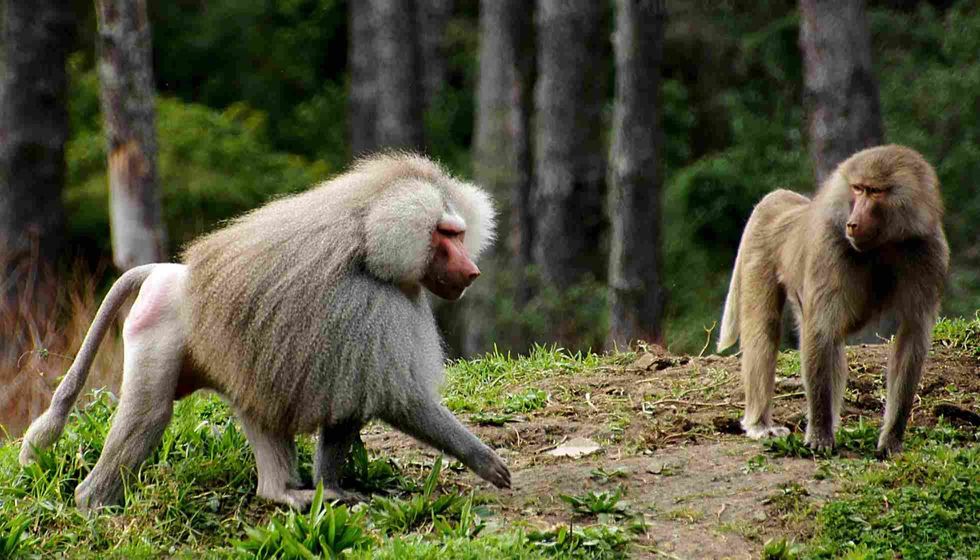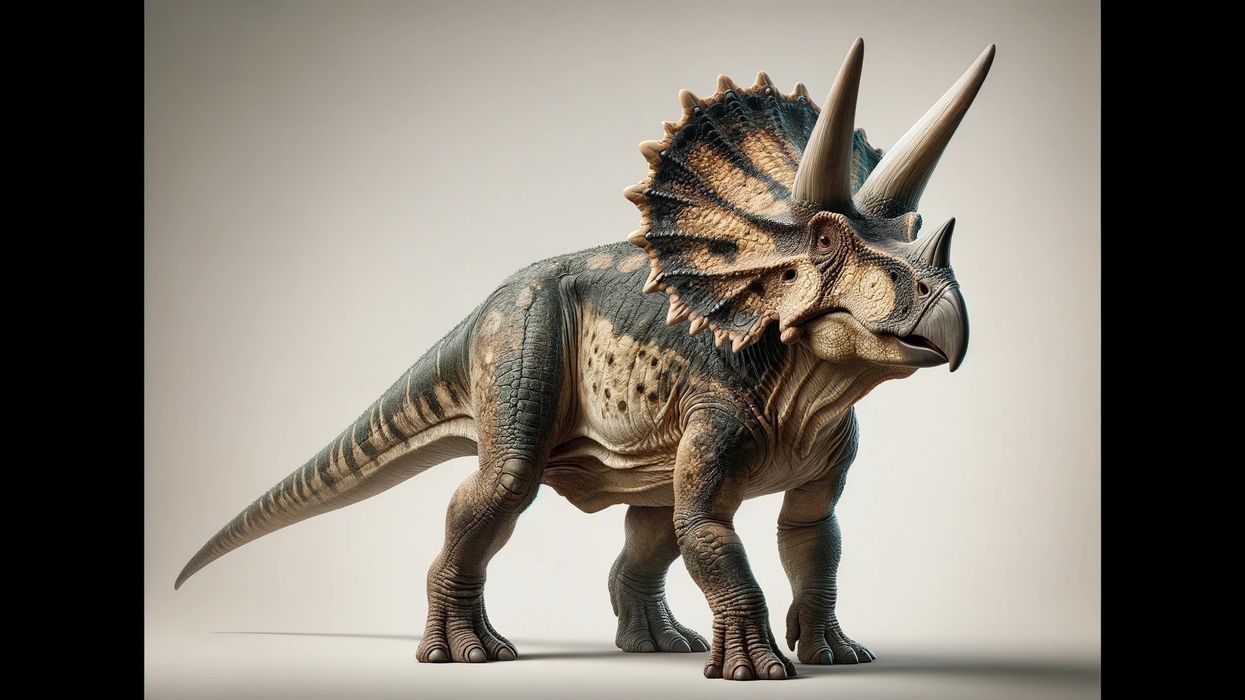This article is about the subfamily Cercopithecinae, and it will tell you everything you need to know about various species of Old World monkeys belonging to this diverse family, including details about their physical characteristics, behavior, diet, habitats, and breeding habits.
The subfamily Cercopithecinae, of the Primates order, consists of around 71 Old World monkey species, such as baboons, macaques, and vervet monkeys. The majority of their populations and distribution is limited to the Sub-Saharan Desert, Gibraltar, and regions of Africa, and some are found in eastern parts of Asia.
The Cercopithecinae is split into two tribes, the Cercopithecini and the Papionini, each consisting of several genera and here are some classifications.
Some species of the Cercopithecini tribe include the genus Allenopithecus, the genus Mandrillus (sphinx-Mandrill), genus Allenopithecus (Allen's swamp monkey), genus Miopithecus (talapoin), genus Erythrocebus (patas monkey), genus Chlorocebus (vervet monkey), and genus Cercopithecus (guenon).
The Papionini tribe includes the genus Macaca (macaque), genus Lophocebus (crested mangabeys), genus Rungwecebus (highland mangabeys), genus Papio (baboons), genus Theropithecus (gelada), genus Cercocebus (white-eyelid mangabeys), and genus Mandrillus (drill and mandrill).
Learn about some other mammals from our orangutan facts and chimpanzee facts pages.
Cercopithecinae Interesting Facts
What type of animal is a Cercopithecinae?
The subfamily Cercopithecinae consists of Old World monkeys that belong to the Animalia kingdom.
What class of animal does a Cercopithecinae belong to?
These Old World monkeys belong to the Mammalia class and the Primates order.
How many Cercopithecinaes are there in the world?
The total population size of Cercopithecinaes is unknown as there are so many different species.
Where does a Cercopithecinae live?
Old World monkeys from the subfamily Cercopithecinae are found across Africa and eastern Asia.
What is a Cercopithecinae's habitat?
Various species of Old World monkeys inhabit a wide range of habitats including semi-arid scrub, rain forests, rocky regions with temperate climatic conditions, and some species inhabit regions with extreme weathers such as the Japanese macaque found in snowy mountainous regions.
Who do Cercopithecinaes live with?
Old World monkeys of the subfamily Cercopithecinae are non-nocturnal and live together in social groups.
How long does a Cercopithecinae live?
Depending on its species, Old World monkeys can live up to 50 years.
How do they reproduce?
All Old World monkeys live in congenial social groups that travel, feed, and breed as coordinated units. Monogamy among Cercopithecine monkeys is exceptionally rare as most species are polygamous, with some organizing harem groups that consist of one adult male that mates with several adult females. Examples of polygamous monkeys include hamadryas baboons, guenons, and geladas.
Females are restricted to their birth groups, whereas males can migrate and join other groups after reaching sexual maturity. Females give birth to a single infant in one breeding season, however, twins are born occasionally.
Gestation among some species lasts for five to seven months. The young infants are looked after, fed, and taken care of for 3-13 months. These monkeys mature fully and become adults within four years.
What is their conservation status?
In Africa, and Southeast Asia several species of Old World monkeys are frequently hunted for their meat which has affected their population size. These are the conservation statuses according to the IUCN Red List of Threatened Species as different species have different statuses.
One species is Critically Endangered, eight species are Endangered, 10 species are Vulnerable, 16 species are Near Threatened, and three species are Data Deficient.
Some Old World monkeys are often protected to some extent by local customs in parts of Southeast Asia such as the rhesus macaques and bonnet macaques in India due to cultural significance.
Cercopithecinae Fun Facts
What do Cercopithecinaes look like?
Every species of Old World monkeys have unique characteristics such as a long tail. Some general characteristics include fur-covered bodies, bare almost naked faces, and beard-like hair on their chin. The color of the fur varies according to the primates species.
Some species have bright-colored patterns and markings on their face and belly. All species have cheek pouches and well-developed thumbs, but the degree of development varies according to the species. They also have pads on their bottoms called ischial callosities.
How do they communicate?
All species of Old World monkeys spend their lives in tightly woven groups, have evolved over years, and developed many ways of communicating with each other and humans including, visual, auditory, and olfactory signals. Some primates emphasize the use of body language while communicating with humans.
How big is a Cercopithecinae?
Males grow up to 26 in (66 cm) and females grow up to 19.5 in (49.5 cm).
How fast can a Cercopithecinae move?
Even though primates have a slower growth rate than most mammals, they are fast when it comes to traveling or moving around. Patas monkeys can run up to 34 mph (54.7 kph).
How much does a Cercopithecinae weigh?
Old World monkeys weigh about 14.3-27.3 lb (6.48-12.3 kg).
What are the male and female names of the species?
These monkeys do not have separate names for their male and female species. They are simply denoted as males and females.
What would you call a baby Cercopithecinae?
A baby monkey is called an infant.
What do they eat?
Old World monkeys or primates have cheek pouches that are used to store food. All species primarily feed on high-energy foods including seeds, grasshoppers, spiders, grubs, fruits, buds, and small vertebrates.
All species have bilophodont teeth and occasionally feed on nutritious fruit leaves. This tells us that cheek-pouched monkeys (subfamily Cercopithecinae) and leaf-monkeys (subfamily Colobinae) have a common ancestral family and are folivorous to some extent.
Cheetahs often prey on several species of Old World monkeys like baboons.
Are they dangerous?
Being attacked by any of these species in the wild is rare, as they are fairly afraid of humans and often run away when approached by people. However, aggressive Old World monkeys may attack you.
They will give you several warnings by looking into your eyes, grunting, and opening their mouth before they attack you. A macaque is known as the monkey that causes a lot of the trouble and will warn you with a grunt and a fake lunge towards you. Yes, they can be considered dangerous.
Would they make a good pet?
Even though these animals are smart and easy to train, there are several reasons that make them bad pets, such as they are ripped from their mother’s arms as babies to be sold to humans as pets. Not only is this extremely traumatic for the baby, but also the mother.
Primates are expensive to purchase and care for.
Old World monkeys have a very specific diet and housing needs that will take up a lot of your time.
They will destroy your home and make it stink! Throwing feces and urinating everywhere is their typical behavior regardless of where they live, and Old World monkeys are social animals who need to be around their kind to develop normally, both psychologically and emotionally.
Did you know...
Old World monkeys have many common names including hussar monkey, red monkey, vervet monkey, and green monkey.
Cercopithecinae pronunciation sounds like 'cer-co-p-theci-nae', we hope this helps you!
The most colorful Old World monkey species is undoubtedly the mandrill (Mandrillus sphinx).
Cheek pouches are absent among the species of the subfamily Colobinae.
Are Cercopithecinae endangered?
Yes, several species of this subfamily are endangered.
What is the difference between Cercopithecines vs Colobines?
Cercopithecines traits differ from that of colobines and the difference between the two include colobines' teeth have high sharp edges, while cercopithecines' have lower and rounded edges. Colobines species have a long tail, and longer hind legs, compared to Cercopithecine monkeys.
Here at Kidadl, we have carefully created lots of interesting family-friendly animal facts for everyone to discover! For more relatable content, check out these colobus monkey facts and spider monkey facts for kids.
You can even occupy yourself at home by coloring in one of our free and printable lemur in a tree coloring pages.










